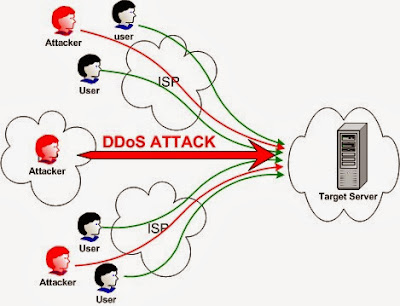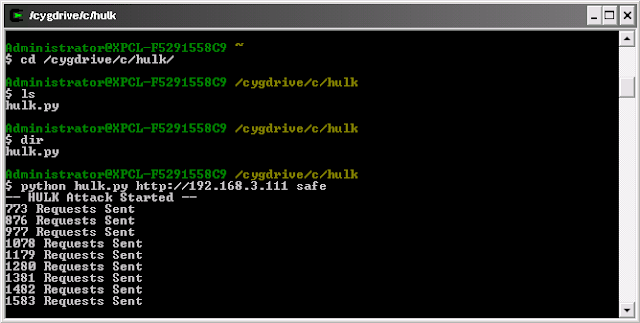What Is a Denial of Service Attack?
A DOS attack is an attempt to make a system or server unavailable for legitimate users and, finally, to take the service down. This is achieved by flooding the server’s request queue with fake requests. After this, server will not be able to handle the requests of legitimate users.
In general, there are two forms of the DOS attack. The first form is on that can crash a server. The second form of DOS attack only floods a service.
Tools :
1. LOIC (Low Orbit Ion Canon) :
LOIC is one of the most popular DOS attacking tools freely available on the Internet. This tool was used by the popular hackers group Anonymous against many big companies’ networks last year. Anonymous has not only used the tool, but also requested Internet users to join their DDOS attack via IRC.
It can be used simply by a single user to perform a DOS attack on small servers. This tool is really easy to use, even for a beginner. This tool performs a DOS attack by sending UDP, TCP, or HTTP requests to the victim server. You only need to know the URL of IP address of the server and the tool will do the rest.
The most important thing you should know is that LOIC does nothing to hide your IP address. If you are planning to use LOIC to perform a DOS attack, think again. Using a proxy will not help you because it will hit the proxy server not the target server. So using this tool against a server can create a trouble for you.
Download : LOIC
2. XOIC
XOIC is another nice DOS attacking tool. It performs a DOS attack an any server with an IP address, a user-selected port, and a user-selected protocol. Developers of XOIC claim that XOIC is more powerful than LOIC in many ways. Like LOIC, it comes with an easy-to-use GUI, so a beginner can easily use this tool to perform attacks on other websites or servers.
It is an effective tool and can be used against small websites. Never try it against your own website. You may end up crashing your own website’s server.
Download XOIC
3. HULK (HTTP Unbearable Load King)
HULK is another nice DOS attacking tool that generates a unique request for each and every generated request to obfuscated traffic at a web server. This tool uses many other techniques to avoid attack detection via known patterns.
It has a list of known user agents to use randomly with requests. It also uses referrer forgery and it can bypass caching engines, thus it directly hits the server’s resource pool.
The developer of the tool tested it on an IIS 7 web server with 4 GB RAM. This tool brought the server down in under one minute.
Download HULK
4. DDOSIM—Layer 7 DDOS Simulator
DDOSIM is another popular DOS attacking tool. As the name suggests, it is used to perform DDOS attacks by simulating several zombie hosts. All zombie hosts create full TCP connections to the target server.
These are main features of DDOSIM
- Simulates several zombies in attack
- Random IP addresses
- TCP-connection-based attacks
- Application-layer DDOS attacks
- HTTP DDoS with valid requests
- HTTP DDoS with invalid requests (similar to a DC++ attack)
- SMTP DDoS
- TCP connection flood on random port
Download DDOSIM
5. Tor’s Hammer
Tor’s Hammer is another nice DOS testing tool. It is a slow post tool written in Python. This tool has an extra advantage: It can be run through a TOR network to be anonymous while performing the attack. It is an effective tool that can kill Apache or IIS servers in few seconds.
Download Tor's Hammer




















0 comments:
Post a Comment